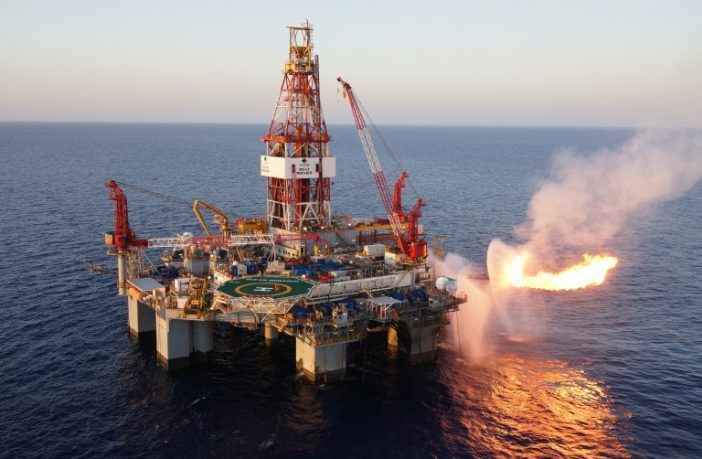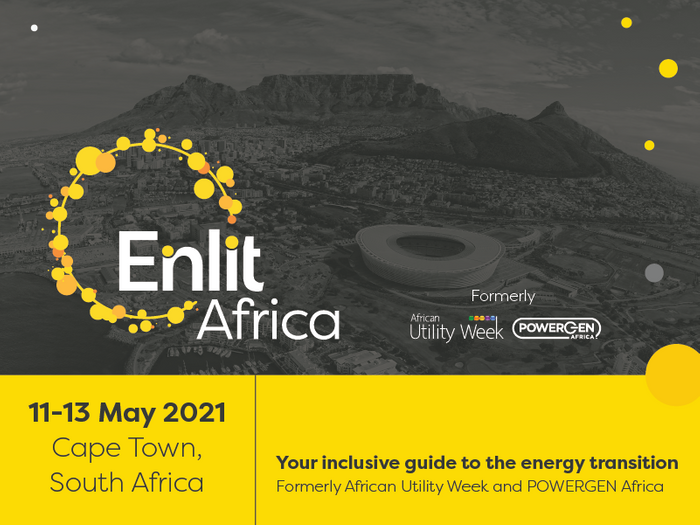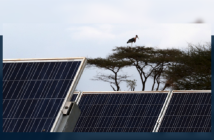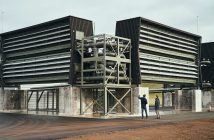- Renewables supplied only a third of Africa’s electricity demand growth in 2020 according to energy think tank Ember’s The Global Electricity Review.
The Global Electricity Review showed that wind and solar showed resilient growth in 2020, despite the COVID-19 pandemic. While this forced a record fall in global power figures, this was not mirrored in Africa.
The report revealed that almost a tenth of global electricity was generated by wind and solar power in 2020. Morocco and Kenya were clear leaders in the wind and solar sectors, already ahead of the world average. But, data from 2014 to 2019 shows that only a third of the rise in Africa’s electricity demand was met by renewable power sources, the rest of the rising demand was met by fossil gas.
The COVID-19 pandemic brought the world to a literal halt in 2020 and paused the global rising demand for electricity. The slight drop (-0.1%) in demand at the time was the first fall since 2009. The drop was still smaller than the impact of the financial crises though.
Wind and solar power showed resilient global growth in 2020 despite the pandemic, up by 15% versus 2019. The growth in wind and solar helped to push coal power to a record global fall of 4%.
Morocco and Kenya renewable energy production meeting rising electricity demand growth in Africa
Morocco and Kenya showed the highest levels of wind and solar energy production to meet electricity demand growth. They respectively generated 16% and 15% of their electricity from wind and solar in 2019. Morocco has achieved a rapid uptake of solar power, increasing from almost zero in 2015 to 4% of electricity supplied in 2019. It also increased its wind generation capacity from 9% of electricity in 2015 to 12% in 2019.
Kenya has seen a rapid acceleration in wind power generation capacity, increasing from less than 1% in 2015 to 14% in 2019. Solar power though, remains at less than 1% of Kenya’s electricity generation mix.
Duncan Gibb, Renewables Project Manager and Analyst, REN21: “It’s encouraging to see that Morocco and Kenya have made such progress with solar and wind power, and have reached high shares among African countries. Their success shows the huge impact of effective political leadership and well-designed regulatory frameworks that create market conditions where renewables thrive.
“At the same time, more than half of the population in Sub-Saharan Africa still lacks access to electricity. Renewable energy, including solar and wind, can quickly and inexpensively help fill this gap. Ember’s Global Electricity Review shows the huge potential for African nations to build affordable renewables and provide electricity for their citizens,” said Gibb.
Despite increases, Africa still hasn’t fully embraced the power of renewables
Many of Africa’s leading economies have yet to harness the potential of wind and solar power, which is now amongst the cheapest forms of new electricity. In 2019, Nigeria and Algeria generated less than 1% of their electricity from wind and solar. Egypt increased from 3% in 2019 after a recent growth in the sector. South Africa tripled its solar generation capacity between 2015 and 2020, to 6%. This means it is still below the world average of 9.4%.
Professor Anton Eberhard, Power Futures Lab, University of Cape Town, “Solar and wind energy are now the cheapest sources of new power generation in Africa. Countries such as Morocco and Kenya have made impressive progress. Other countries, including South Africa, will add significant new investments in these technologies in 2021 and beyond. As the share of these variable energy sources grows, there will be new challenges for power systems in Africa, especially for system operators who will have to procure and manage complementary flexible resources to ensure supply security and stability.”
Fossil fuels still dominate the world’s electricity in 2020
Fossil fuels generated 61% of the world’s electricity in 2020, down from 66% in 2015 when the Paris Agreement was signed. Coal was the single largest source, responsible for 34% of global electricity in 2020.
The dataset of global electricity generation revealed that major African economies were significantly more reliant on fossil fuels for electricity than the world average of 61%. Above-average levels of fossil fuels were observed in Nigeria (81%) and South Africa (89%) in 2020, also in Egypt (90%), Algeria (99%) and Morocco (79%) in 2019.
South Africa stands out with by far the largest share of coal (86%) in Africa, over double the world average.
However, fossil fuel’s share of electricity is hugely varied across Africa, as many countries have far higher shares of clean electricity than the world average in 2020 (39%). Ethiopia, Kenya, Angola and Zambia all generated over 80% of their electricity from clean sources in 2019. Kenya recently pledged 100% renewable electricity by 2030 showing their commitment to a clean energy future.
Across the G20 there were also many countries with fossil fuel shares above the global average in 2020. Five G20 countries had over three-quarters of their electricity supplied from fossil fuels in 2020: Saudi Arabia (100%), South Africa (89%), Indonesia (83%), Mexico (75%) and Australia (75%). In comparison, France and Brazil only generated 9% and 14% of their electricity from fossil fuels, respectively.
Africa’s rising electricity demand growth
In Africa, electricity production is still increasing every year. From 2014 to 2019, renewables met one third of Africa’s growth in production, with gas making up the remaining two thirds. Renewables growth in Africa has been accelerating since 2015, but it has not yet been fast enough to meet all of the rising demand. The rise in gas was particularly marked in North Africa, where there were the biggest increases in electricity demand, and very little build-up of renewable electricity.
Africa – unlike Asia – has avoided a coal-reliant electricity grid. There has been no growth in total coal generation since 2014, as South Africa’s falling coal generation was cancelled out by increases in Morocco and Zambia.
In addition, there is very little coal capacity under construction or planned in Africa – only South Africa and Zimbabwe are building new coal.
Peter Tunbridge, analyst at Ember: “The challenge remains to build renewables fast enough to keep up with rising electricity demand, not just for Africa, but across the world. Emerging economies such as India and Turkey are accelerating their deployment of wind and solar beyond the increase in electricity demand, to actually reduce their dependence on fossil fuels. Wind and solar have the potential to power Africa’s electric future, and rapid deployment of these technologies will be essential for African countries to meet their rising demand for electricity, whilst avoiding a fossil gas trap.”
Download full report HERE
Author: Theresa Smith

Theresa Smith is a conference producer for Clarion Events Africa. This article was originally published on ESI Africa and is republished with permission with minor editorial changes.
Do Not Miss













